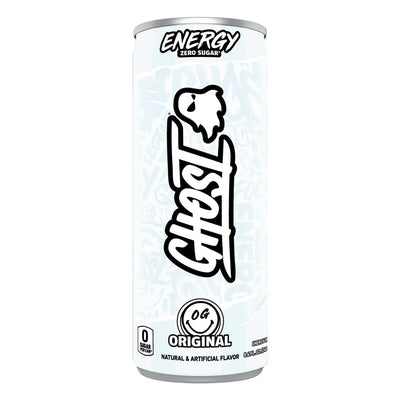Understanding Creatine as a Supplement: How It Works
Creatine is a popular dietary supplement among athletes and fitness enthusiasts. It has been shown to increase muscle mass, strength, and performance in high-intensity activities. However, many people are still unsure about what creatine is and how it works.
In this article, we will discuss the basics of creatine, its benefits, and its mechanisms of action.
What is Creatine?
Creatine is a natural compound that is found in the human body and in some foods, such as meat and fish. It is made up of three amino acids: arginine, glycine, and methionine. Creatine is stored in the muscles and used to produce adenosine triphosphate (ATP), which is the primary source of energy for muscle contractions. Creatine supplementation has become popular among athletes and fitness enthusiasts, as it has been shown to increase muscle mass, strength, and power. However, there is still some confusion about what creatine is and how it works. In the following sections, we will explore the different types of creatine supplements, their benefits, and how they work in the body.

Types of Creatine Supplements
While creatine can be obtained naturally from foods, many people choose to take creatine supplements to boost their athletic performance. There are several different types of creatine supplements available on the market, each with their own unique properties and benefits. In this section, we will explore the most popular types of creatine supplements.
-
Creatine Monohydrate - This is the most widely used and studied form of creatine. It is a simple molecule that is easily absorbed by the body, making it an effective and affordable option for most people.
-
Creatine Ethyl Ester - This form of creatine is created by attaching an ester molecule to the creatine molecule. This is thought to improve absorption and bioavailability, but there is limited research to support these claims.
- Creatine Hydrochloride - This is a newer form of creatine that is marketed as being more soluble and easier to digest than other forms. However, there is little research to support these claims.
- Buffered Creatine - This form of creatine is made by adding alkaline ingredients, such as sodium bicarbonate, to the creatine molecule. This is thought to increase the pH of the creatine, making it less likely to break down into creatinine, which is a waste product of creatine metabolism.
It's important to note that while there are different types of creatine supplements available, creatine monohydrate remains the most widely used and effective form of creatine.
Benefits of Creatine
Creatine supplementation has been shown to have numerous benefits for athletes and fitness enthusiasts. Here are some of the key benefits of creatine:
-
Increased muscle mass - Creatine supplementation can increase muscle mass by increasing water retention in the muscles, as well as promoting protein synthesis.
- Improved strength and power - Creatine supplementation has been shown to improve strength and power in both weightlifting and high-intensity exercise.
- Enhanced recovery - Creatine supplementation may help reduce muscle damage and inflammation, leading to faster recovery times between workouts.
- Increased anaerobic capacity - Creatine supplementation can improve the body's ability to perform high-intensity, short-duration exercise, such as sprinting and jumping.
- Neuroprotective effects - Creatine has been shown to have neuroprotective effects, meaning it may help protect the brain from damage and improve cognitive function.
Overall, creatine supplementation can be a safe and effective way to enhance athletic performance and improve overall health. However, it's important to talk to your doctor before starting any new supplement regimen.
Dosage and Timing
The recommended dosage for creatine supplementation varies depending on the form of creatine being used. For creatine monohydrate, the most widely used form of creatine, the typical dosage is 3-5 grams per day. However, some people may choose to load up on creatine for the first week of use by taking 20-25 grams per day, divided into smaller doses throughout the day.
Timing is also important when it comes to creatine supplementation. It's best to take creatine with a meal that contains carbohydrates, as this can help improve absorption. It's also important to drink plenty of water when taking creatine, as it can cause dehydration if not consumed with enough fluids.
For those who engage in high-intensity exercise, it's recommended to take creatine before or after exercise to maximize its benefits. However, for those who engage in more endurance-based exercise, it may be more beneficial to take creatine at other times throughout the day.
It's important to note that everyone's body is different, and the optimal dosage and timing of creatine supplementation may vary depending on individual factors such as body weight and exercise routine. It's always a good idea to consult with a doctor or registered dietitian before starting a new supplement regimen.
Mechanisms of Action
Creatine works by increasing the amount of phosphocreatine in the muscles. Phosphocreatine is a molecule that provides energy for muscle contractions, and it is synthesized from creatine in the body. When creatine levels are increased through supplementation, more phosphocreatine is available to the muscles, which can improve performance during high-intensity exercise.
Creatine may also work by increasing the activity of satellite cells in the muscles. Satellite cells are responsible for muscle repair and growth, and studies have shown that creatine supplementation can increase their activation and proliferation. This can lead to increased muscle mass and strength over time.
Another possible mechanism of action for creatine is its ability to buffer the muscles against acid buildup during high-intensity exercise. By increasing the pH of the muscles, creatine may help reduce fatigue and improve exercise performance.
Safety and Side Effects
Creatine supplementation is generally considered safe for healthy individuals when taken within recommended dosages. However, some people may experience mild side effects, such as:
- Digestive issues - Some people may experience nausea, diarrhea, or stomach cramps when taking creatine.
- Dehydration - Creatine can cause the body to retain water, which can lead to dehydration if not consumed with enough fluids.
- Muscle cramps - Rarely, some people may experience muscle cramps when taking creatine.
- Kidney damage - There have been concerns in the past that creatine supplementation may cause kidney damage, but there is limited evidence to support this claim.
It's important to note that creatine supplementation is not recommended for those with kidney disease or other medical conditions that affect kidney function. It's also important to talk to a doctor before taking creatine if you are pregnant or breastfeeding.
Summary
Creatine supplementation has become a popular option for athletes and fitness enthusiasts looking to enhance their performance and promote muscle growth. With its numerous benefits and relatively low risk of side effects, it's no wonder why creatine has become such a popular supplement.
It's important to remember that while creatine can be a safe and effective supplement, it's always a good idea to talk to a healthcare professional before starting any new supplement regimen. By doing so, you can ensure that you are taking the supplement in the right dosage and at the right time, and that it is safe for your individual health needs.
We hope this article has provided valuable information on creatine and its benefits, and that it will help you make an informed decision about whether or not to include creatine in your supplement routine. If you have any questions or comments, please feel free to leave them below. Thank you for reading!










Leave a comment